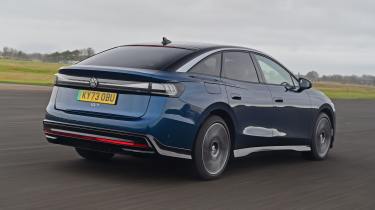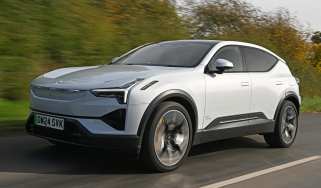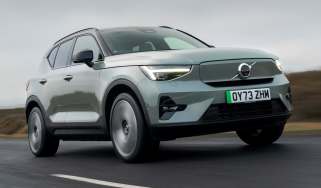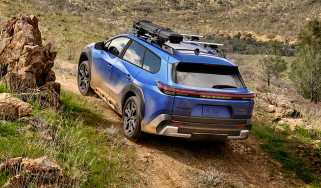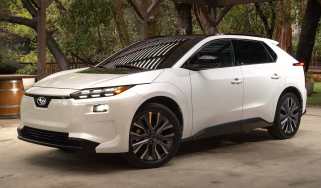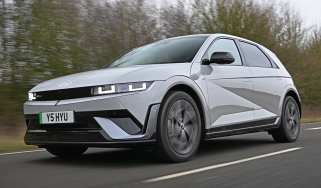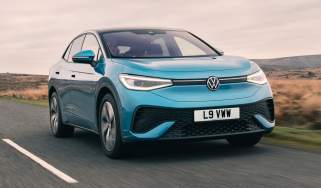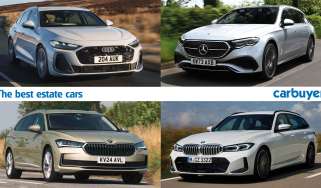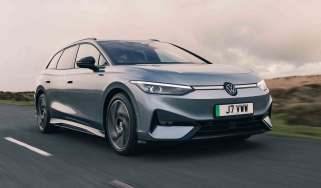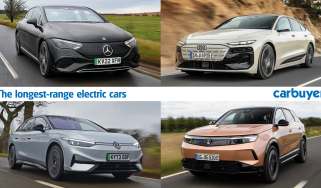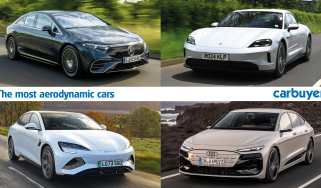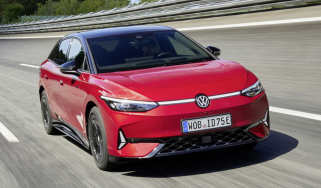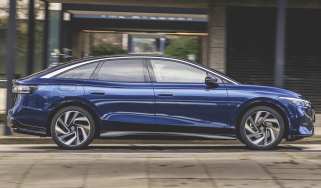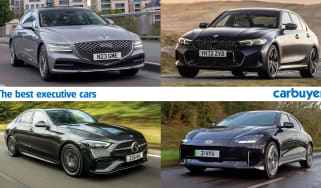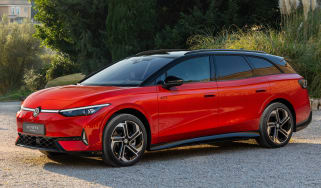Volkswagen ID.7 review - long range, but expensive
“With a long range and good drive, the Volkswagen ID.7 could be the brand’s best EV yet, but its high price holds it back”
Pros
- Good to drive
- Comfortable
- Impressive range
Cons
- Expensive
- Too few physical switches
- Dull interior
Verdict – is the Volkswagen ID.7 a good car?
We think the Volkswagen ID.7 is the best car from the electric ID. lineup so far, so as a flagship saloon it certainly fulfils the brief. It boasts a very competitive range and it drives pretty well, especially for a car of its size. That said, it falls behind in some areas, with an uninspired interior and notably steep price tag. The GTX flagship model falls short of feeling like an overtly sporty version of the ID.7, but it’s powerful and yet still comfortable and easy to live with, so it may appeal on that basis alone.
Volkswagen ID.7 models, specs and alternatives
Rather than Volkswagen’s other ID. models, which have so far been more SUV-like in style, its latest flagship electric model, the ID.7, is more akin to a saloon in its design. There’s also an estate ‘Tourer’ model on the way, which will aim to up the ante for practicality.
 The 10 best electric cars in 2025
The 10 best electric cars in 2025
With the EV market diversifying more than ever before, the ID.7 has a few rivals which all differ in terms of size and bodystyle. It’s slightly larger than the Tesla Model 3 and Polestar 2, but it’s hard not to compare it with these well-established models. It’s comparable in size to a BMW i5, Mercedes EQE or Tesla Model S, though these offer a much more premium package than the ID.7.
More reviews
In-depth reviews
We tested the Volkswagen ID.7 in a showdown against five other electric company-car rivals. It ended up smack bang in the middle of the pack in third place just behind the Tesla Model 3 and BMW i4, but ahead of the Polestar 2, Hyundai Ioniq 6 and BYD Seal thanks to its comfort and practicality. The i4 and the Model 3 are arguably more desirable, though, and if you’re looking for a car that’s also good to drive with impressive performance, those two beat the ID.7.
Without beating around the bush, the Volkswagen ID.7 is quite expensive, starting from over £51,500 in Pro Match trim. For that you won’t get the car’s headline 435-mile range either – that belongs to the Pro S model with an 82kWh battery that costs around £4,000 more. Instead, the entry-level car gets a 77kWh battery that’s good for up to 381 miles of range from a charge. To put that into perspective, a top-spec Tesla Model 3 Long Range will cost less and boasts up to 436 miles to a charge, so if you don’t need the extra space and practicality, you might not see the benefit.
The Volkswagen ID.7 GTX arrived later and costs around £10,000 more than the base model. It’s the flagship model and has the same 82kWh battery as the Pro S, but power is increased at the expense of range, so it’s actually the model that travels the shortest distance to a charge at up to 365 miles.
The Volkswagen ID.7 doesn’t feel overly premium, though as you’d expect from the German manufacturer its fit and finish feel sturdy enough, and there are soft-touch materials on the doors and dash as well as supportive seats.
Its tech offering doesn’t reinvent the rulebook, either, but the ID.7 does get the brand’s latest infotainment system which is easier to use and more responsive than ever. Although Volkswagen has improved the user experience compared to that of earlier ID. cars, there are still too few physical buttons. At least one main niggle – the lack of backlit touch controls making them hard to use in the dark – has been addressed for the ID.7, but like other ID. models the interior could still frustrate you if you’re less enthusiastic about virtual controls.
We have been impressed with how the ID.7 drives, though, and while it’s not as quick as some alternatives, it handles well and you quickly forget how big it is thanks to its around-town nimbleness. Don’t be fooled by the GTX version though – it’s not quite an electric equivalent of the hot GTI models. Despite being more powerful with quicker performance figures, it’s no out-and-out sports car, but it still handles well while offering a comfortable ride. There’s no getting around the ID.7’s hefty weight and that’s what most holds it back from feeling especially sporty.
| Trim levels | Power options |
|
|
Volkswagen ID.7 alternatives
The ID.7’s large size and high price, but lack of premium feel means it currently sits in a somewhat confusing area of the market with mostly indirect rivals, but it could have its work cut out if it’s to pull buyers away from higher up (BMW i5, Mercedes EQE) or lower down (Tesla Model 3, Polestar 2 or Hyundai Ioniq 6).
Executive EVs
Large premium EVs
Should you buy a Volkswagen ID.7?
In a number of ways the Volkswagen ID.7 feels like the best ID model yet. Most of the issues with the user interface in earlier cars in Volkswagen’s range have been sorted, and the interior feels quite upmarket too.
Not only that, but improvements in efficiency and battery technology mean the slippery ID.7 also boasts impressive range figures. If you want an electric car but still need to cover lots of motorway miles, the ID.7 should definitely be on your shortlist.
While some will inevitably prefer the Tesla Model 3 thanks to its access to the Supercharger network and impressive software, the ID.7 strikes back with better practicality – especially if you go for the Tourer estate.
What is the best Volkswagen ID.7 for low running costs?
Every ID.7 should be cheap to run thanks to the low VED, BiK and charging costs (on a competitive home tariff) all electric cars enjoy, but we’d stick with the entry-level version if you’re on a tight budget.
What is the best Volkswagen ID.7 for keen drivers?
There’s a high-performance ID.7 GTX with the benefits of all-wheel drive and extra power. While it doesn’t offer near-supercar levels of acceleration like the Tesla Model 3 Performance, it does have reassuring handling and an impressive turn of speed.
What is the Carbuyer pick of the Volkswagen ID.7 range?
For most people the ID.7 Match Pro S will be the highlight of the ID.7 range thanks to its larger 86kWh battery and plentiful features. This combo gives the ID.7 its headline range figure of 436 miles and its fastest charging speeds.

